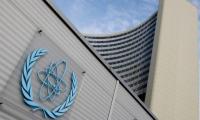Islamabad: Traditionally, the diagnosis of epilepsy requires the occurrence of at least two unprovoked seizures. The lifetime likelihood of experiencing at least one epileptic seizure is about 9%, and the lifetime likelihood of receiving a diagnosis of epilepsy is almost 3%. According to a study, overall prevalence of epilepsy in Pakistan is estimated to be 9.99 per 1,000 population, which is more or less similar to global prevalence (5-10 cases per 1,000). An estimated 70% of people living with epilepsy could live seizure-free, if properly diagnosed and treated.
Head of Department and Consultant Neurologist at Shifa International Hospital (SIH) Dr. Maimoona Siddiqui shared the above information at an awareness seminar organized at SIH Here on Monday in connection with International Epilepsy Day.
Dr. Maimoona shared that the diagnosis of epilepsy requires the occurrence of at least two unprovoked seizures. The first seizure should not be treated unless there are any clinical findings explained on diagnostic tests including MRI, EEG or any abnormal focal neurological findings or in case of family history.
Epilepsy is a mental disease marked by recurrent, unprovoked seizures. As proposed by the International League Against Epilepsy (ILAE) and the International Bureau for Epilepsy (IBE) in 2005, epilepsy is defined as a brain disorder characterized by an enduring predisposition to generate epileptic seizures and by the neurobiological, cognitive, psychological, and social consequences of this condition.
According to the World Health Organisation (WHO), around 50 million people worldwide have epilepsy, making it one of the most common neurological diseases globally.
LHC Justice Muhammad Iqbal announces reserved verdict rejecting PTI founder’s plea
Committee raises serious concerns over absence of Chairman Wapda in meeting
Committee decides to summon planning minister to address funding gaps and remove obstacles hindering progress
Official says due to widespread presence of polio virus in Balochistan, further preparations are essential to ensure...
Court instructs petitioner to remove objections of registrar’s office within seven days
Minister highlights CICA’s immense potential in addressing region’s key challenges including political disputes







